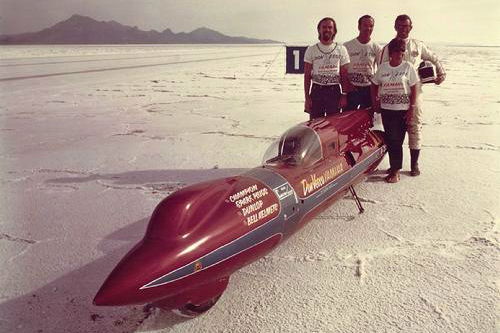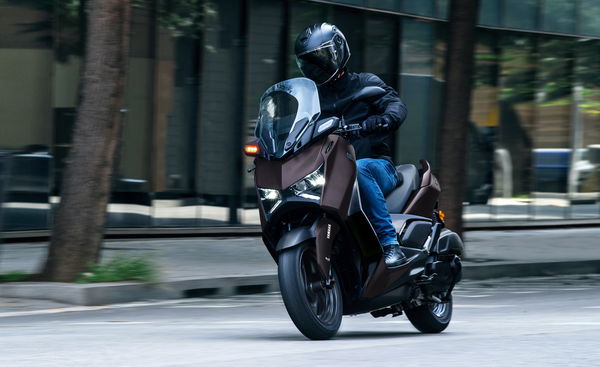Top 10 most interesting MotoGP & 500cc GP oddball motorcycles
The craziest & most ambitious ideas from motorcycle racing's premier class. 10 of the most unique & interesting bikes to have appeared at the highest level.
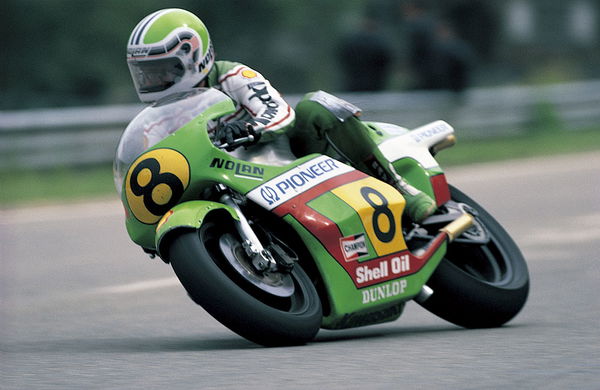
Racing prototype motorcycles should be the arena where the craziest and most ambitious ideas in motorcycling are tested – with the best ideas & innovations filtering through to the lower series, and eventually down to production motorcycles.
But for every inspired concept there are dozens of failed efforts or madcap schemes that either didn’t work out as planned or, while successful on track, turned out to be simply too advanced to ever filter down to more mainstream bikes.
The oddball bikes featuring those ideas are often the most interesting, regardless of their relative success or failure. Here’s our top 10 weird racers to have appeared (or nearly appeared) at the highest level.
10. Blata V6
Remember when four-strokes were reintroduced to the MotoGP championship back in 2002? For months, even years beforehand, speculation was rife as to which layout would be the most successful, with many tipping Honda to produce a crazily-powerful V6 machine. That never happened, and no bike has yet graced the latest iteration of the premier class with more than five cylinders, but in 2005 a V6 nearly did appear from the unlikely source of Blata, the Czech purveyors of minimotos. Blata was tied in with WCM for the 2005 season, but after several delays the bike – which never seems to have got beyond being half-built – was ditched, leaving WCM to run its old Yamaha-derived four-cylinder machine for what turned out to be its last season in the championship.
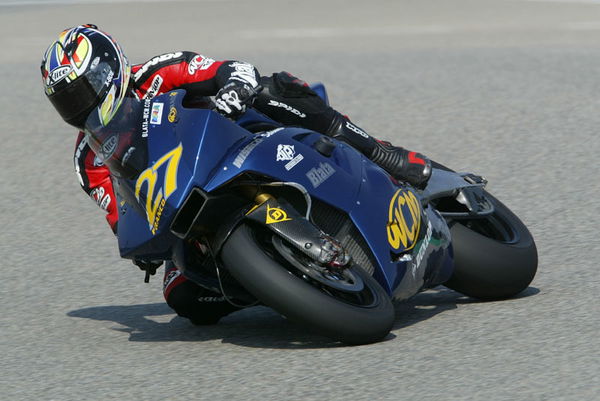
9. Aprilia RS Cube
While Honda’s all-conquering RC211V showed that a choosing an odd number of cylinders was a cunning plan under the 2002-on MotoGP regulations, when Aprilia tried to take the same route it fell somewhat flat. The three-cylinder RS Cube was one of the most highly-anticipated bikes of the new era, with more technology than any of its rivals thanks to an engine that was effectively three cylinders from a then-current V10 F1 engine. Just as Honda’s five-cylinder engine allowed it to use the same 145kg minimum weight as a four-cylinder, the Aprilia triple was allowed to weigh the same as a twin – just 135kg. The firm knew that the engine, believed to be the most powerful on the grid at the time with around 240bhp thanks to pneumatic valves and other F1 tech, would be hard to get the best from, so it went all out to tame it with fly-by-wire throttles and traction control. Unfortunately, the electronics of the era just weren’t up to the job, and the RS Cube was a hound to ride. Ironically, after a decade of improving technology, GP bikes and even many road bikes now routinely use the same type of electronically-assisted methods to tame power delivery that Aprilia hoped would be the key to success back in 2002. Sadly the project was dropped in 2004.
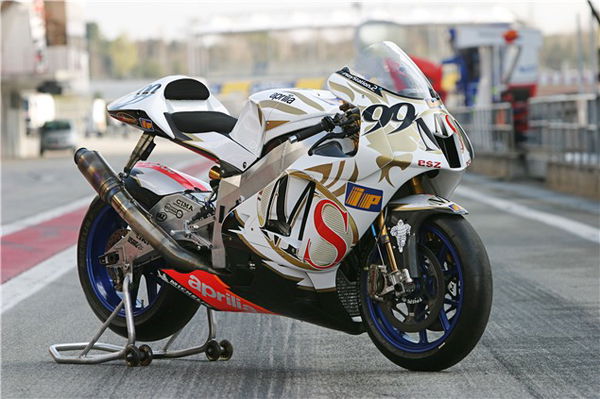
8. Aprilia RSW2
Even before the advent of the four-stroke class in 2002, Aprilia was a firm that tended to think laterally, as its 1994 RSW2 showed. You’d have thought that, in a racing class limited to 500cc, using less than the full capacity would be the equivalent of bringing a knife to a gunfight. But that’s what Aprilia did – the first RSW2 machines were only 410cc. The idea sprang from the fact that at the time the best qualifying times on the 250cc grid were often faster than many of the bikes in the 500cc class. Which got Aprilia’s engineering guru, Jan Witteveen thinking: if he took the firm’s successful 250 racer and bored it out, he might have an instant contender in the 500cc class. The fact that twins enjoyed a minimum weight of just 105kg compared to 130kg for the dominant four-cylinder 500s added even more temptation. And the RSW2 was just that – a big-bore 250 with a 410cc motor. Honda’s twin-cylinder NSR500V was also built using similar logic. Unfortunately, the reality was that while one-lap pace could be good, in a race the four-cylinder bikes would roar off down the straights and block the twins in the corners, eliminating their advantage. Later RSW2s were 430cc, then 460cc and eventually 498cc – but the bikes were never a real challenge to the four-cylinders that dominated the era.
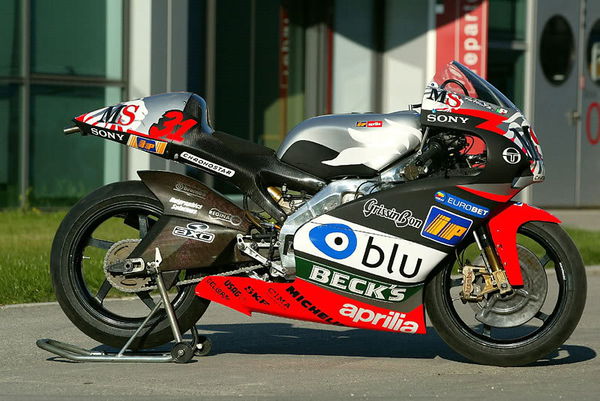
7. Proton KR5
You could never accuse Kenny Roberts of being anything less than canny, and when MotoGP shifted to become a four-stroke series his thinking was as bright as ever. While others rushed to make expensive new four-strokes for 2002, he stuck with his team’s old KR3 three-cylinder two-strokes – which scored some impressive top 10 finishes even against the far more powerful new machines during the year and let Roberts see which of his rivals’ new technologies turned out to be the most impressive. It didn’t take long to see that Honda’s V5-powered RC211V was leagues ahead of its rivals, so Roberts decided to build an ambitious four-stroke V5 for his own team’s 2003 machine. Unfortunately, it turned out that a race-winning four-stroke V5 engine isn’t the sort of thing that’s easily copied, and the KR5 – valiant effort that it was – never even managed to get results as good as its two-stroke predecessor. The engine was ditched and replaced with a V4 KTM motor, with no improvement in results. It wasn’t until 2006, when the team got a supply of real Honda V5 engines, that Roberts’ bikes were able to shine again – scoring two podiums during the last year of the 990cc regulations with the re-designated KR211V.
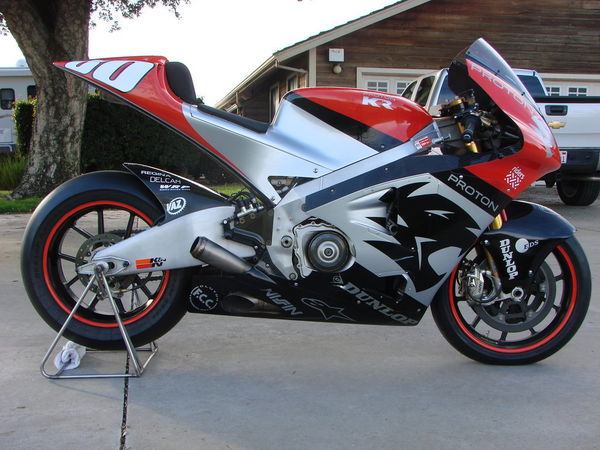
6. Elf 2
We couldn’t have this list without mentioning Elf’s Honda-powered efforts of the mid-1980s – after all, the firm’s valiant efforts to prove that forks are not the best way to hold the front wheel onto a bike are the closest anyone has come to actually providing a convincing argument against forks, backed up with real evidence. We’ve picked the 1984-85 Elf-2 here, with its three-cylinder Honda engine, but the Elf-3, Elf-4 or Elf-5 are just as worthy. The Elf-4 was particularly impressive, thanks largely to the superhuman efforts of Ron Haslam who used it to finish fourth in the championship in 1987.
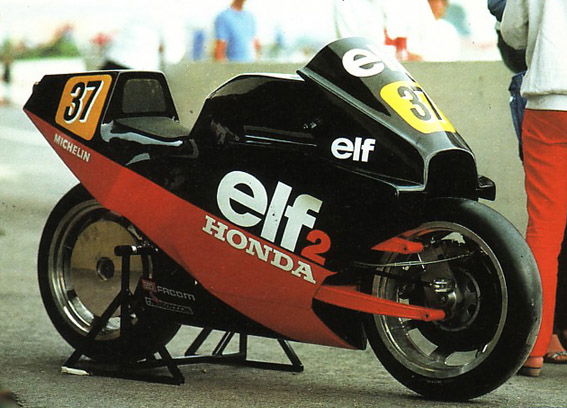
5. Kawasaki KR500
In recent years Ducati’s dalliance with a carbon-fibre chassis for the Desmosedici racer and the virtually frameless design of the Panigale have brought the term ‘monocoque’ to prominence in motorcycling. But Kawasaki’s KR500 of the early 1980s was a much clearer example of the idea. In its original form, the bike’s fuel tank actually formed its main structure – with the steering head and swingarm pivot structures welded straight to the aluminium tank. Later versions, from 1982, edged away from the idea, with a an aluminium backbone chassis and a more conventional, removable fuel tank.
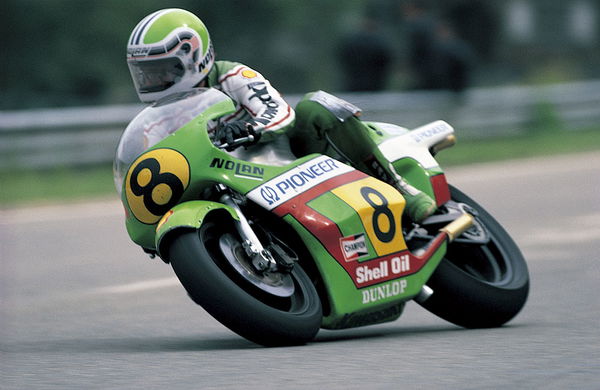
4. 1979 Honda NR500
Honda has never been short of an idea or two, and it threw several of them at its return to top-level GP racing in 1979. The NR500 was a marvel, with its oval-pistoned V4 four-stroke, with eight valves and two con-rods per cylinder and a rev ceiling of nearly 20,000rpm. Sure, a two-stroke would have been about a zillion times simpler to make, but Honda wanted to prove that four-strokes were the future. But just doing a crazy engine wasn’t enough for Honda. Oh no. So it added a monocoque frame – where the lower ‘fairing’ panels were actually structural – and side-mounted radiators, plus some radical aerodynamics including a vertical windscreen. The story would have been a fairytale if the bike had gone on to destroy the opposition, but fairytales don’t tend to happen, and it didn’t. Honda persevered with the four-stroke, but didn’t return to its winning ways until it gave in and created a two-stroke 500 in 1982.
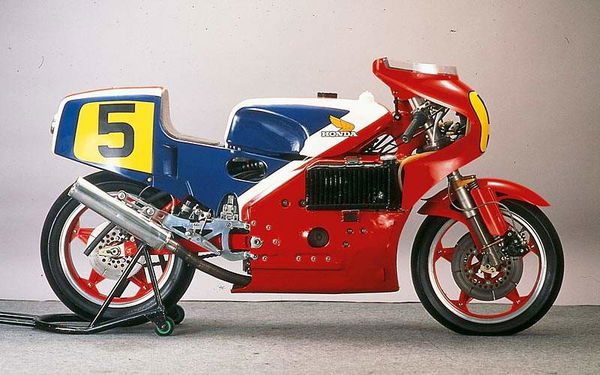
3. 1984 NSR500
The alphanumeric combo ‘NSR500’ probably conjures images of relentless wins and an era of Honda domination in GP racing. But the first bike to carry the title wasn’t so auspicious. The 1984 NSR – which was intended to replace the title-winning NS500 – had its fuel tank under the engine and exhausts on top, under a dummy ‘tank’ cover. The idea was that the fuel’s weight would be carried low and the bike’s handling would alter less as the tank emptied. Unfortunately it didn’t quite work like that, and while Freddie Spencer won the second round on the bike he opted to use the previous generation three-cylinder machine for all the rest of his wins during 1984.
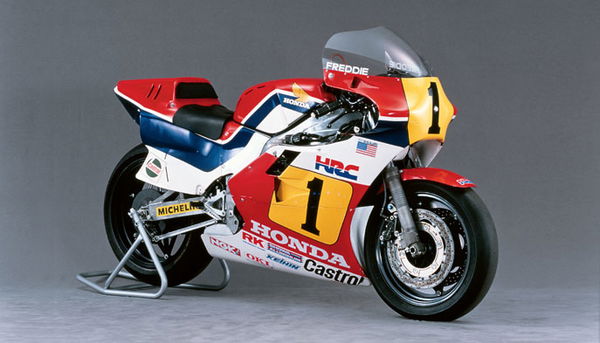
2. Honda RC211V
Yep, while many of the bikes on this list are glorious failures, the RC211V – one of the most successful racers in history – also makes the cut. Why? Because the V5 engine that gave it such an advantage back in 2002 is still an engineering marvel today. When the FIM set out the regulations for the revival of four strokes in MotoGP, they were clearly aware that Honda might be out to prove something, so the rules specifically banned certain technologies like oval pistons. Most rumours suggested Honda would make a V6, so when the RC211V turned up with a five cylinder engine, the world wondered how well it would work. As well as overcoming the inevitable balance problems of a V5, Honda was widely rumoured to have used other clever thinking in the engine – some said that the two rear pistons might have a different bore and stroke compared to the three at the front, or that the motor used some clever firing intervals to deliver its power more cleanly. Even today, it’s not entirely clear exactly what was hidden in the RC211V’s motor, as there were several variations over the years. Beyond the engine, the bike also introduced us to terms like ‘mass centralisation’ and some new aerodynamic thinking. Rarely has a machine with so many new ideas managed to work so effectively.

1. 1983 Honda NR500
We started this list with a bike that never raced, and we’re ending with one too. Yes, we’ve already mentioned the NR500, but that was the 1979 model – the machine that was shown, but never raced, in 1983 is worthy of an entry of its own. For most, Honda’s 1983 season was notable because it marked a full-scale return to two-strokes and the firm’s first world title since the 1960s, carrying Freddie Spencer to his first 500cc championship. But at that year’s Tokyo Motor Show the firm revealed the four-stroke machine that it had also developed in 1983, the latest iteration of the NR500, and it was mind-blowing. Yes, the engine was still a weird, oval-pistoned marvel, this time made largely of titanium and magnesium, but the bike it was mounted in was even more advanced. The frame was carbon fibre. So was the swingarm. And the wheels, for that matter. Oh, and the fork tubes. And the brakes. Basically, if it could be made of carbon, it was. Would it have been competitive? Probably not, or Honda would no doubt have actually raced it. But no other bike has pushed the limited of its contemporary technology quite so hard.
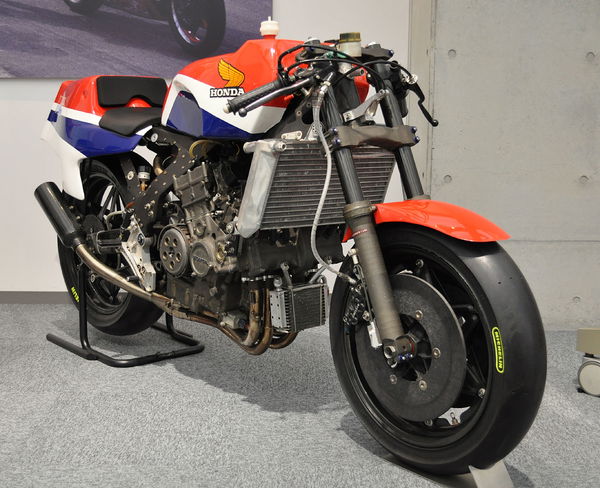
That's our pick of the best prototype motorcycles. Want more?
Top 10 land speed record bikes
Top 10 pointless motorcycle innovations
Top 10 most powerful bikes of 2015 (so far)
- Sign up for Visordown's weekly newsletter, Bugsplat, to get the best motorcycle news, road tests and features plus exclusive competitions and offers direct to your inbox. Register as a Visordown member here and tick the box for Bugsplat in your newsletter settings here.
